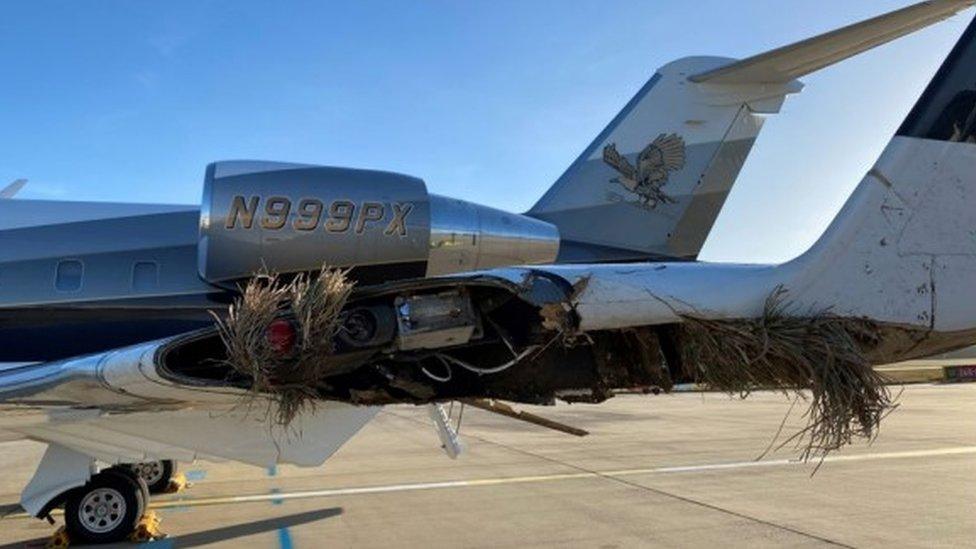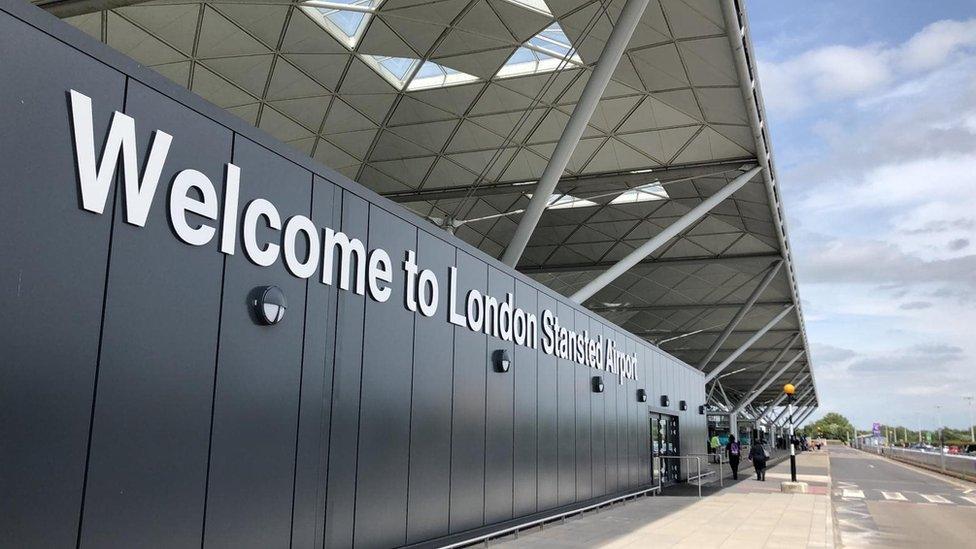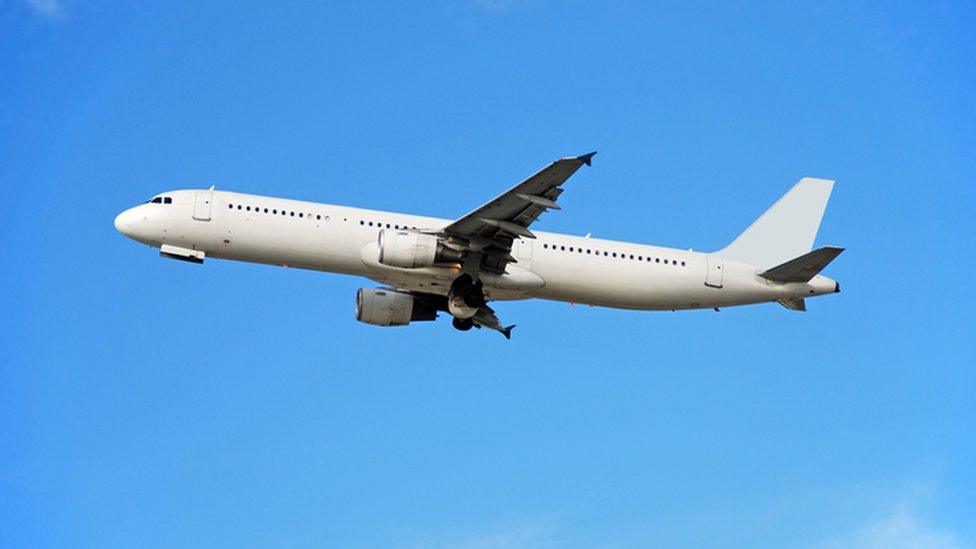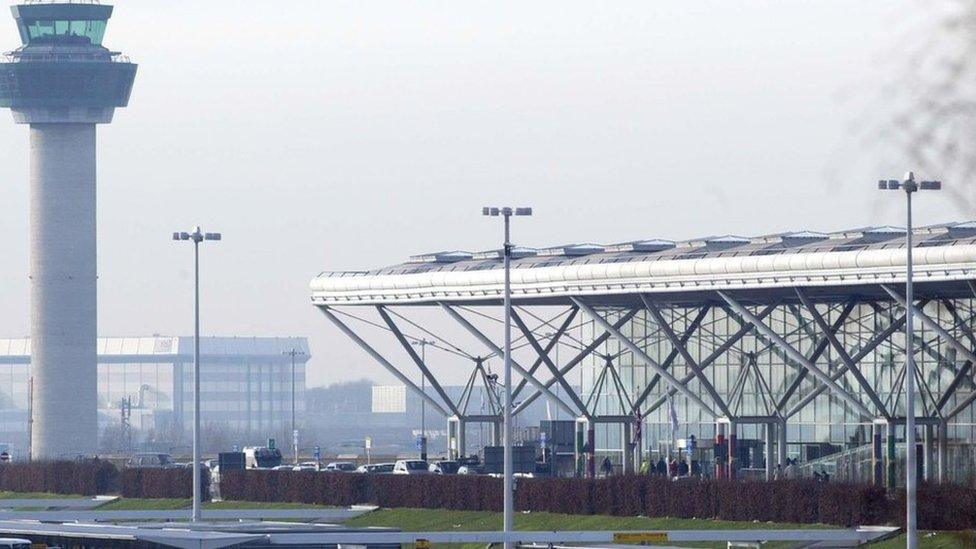London Stansted Airport: Plane damaged while trying to land
- Published

It did not make financial sense to repair the plane
An aircraft was damaged after a pilot lost control while trying to land at Stansted Airport, an investigation found.
The Challenger 604 had flown from Egypt with two crew and two passengers on 31 January 2022 and met "gusty" conditions in Essex.
The left wingtip struck the runway several times. There were no injuries.
The Air Accidents Investigation Branch (AAIB) said the pilot had to deal with strong crosswinds.
The crosswind had been forecast at Stansted before the jet departed from Cairo. The AAIB said it would have been possible to delay the flight or find an alternative airport.
During the landing attempt, an "excessive angle of attack" meant the wingtip was damaged.
The jet then bounced on its nosewheel, followed by its left and then right landing gear, before it left the runway.
Both pilot and co-pilot were "shaken" once the aircraft had levelled at 4,000ft (1,200m), the AAIB stated.

The private jet was due to land at Stansted Airport but had to divert to Gatwick after a failed attempt
While the pilot suggested that they should make another attempt at Stansted, the co-pilot recommended that they look for an airport with less of a crosswind.
After instruction from the air traffic control officer, the jet diverted to Gatwick, where it landed without further incident.
An inspection revealed damage to the nosewheel and left wingtip was beyond economical repair.
During its investigations, the AAIB found relations between the pilot and co-pilot had been "strained" due to differences in style over giving and receiving instructions.
Both pilots had been awake for 17 hours or longer due to the flight being delayed and had experienced "higher than normal workload" whilst they dealt with turbulence and a nervous passenger, the AAIB said.
The report stated that while it was unlikely that fatigue caused the accident, along with commercial pressures and the colleagues' interactions, it could have affected the pilot's decision-making and communication.
AAIB said the aircraft manufacturer intended to enhance its guidance regarding crosswind landing technique.

Follow East of England news on Facebook, external, Instagram, external and X, external. Got a story? Email eastofenglandnews@bbc.co.uk , externalor WhatsApp 0800 169 1830
- Published17 October 2023

- Published2 February 2023
